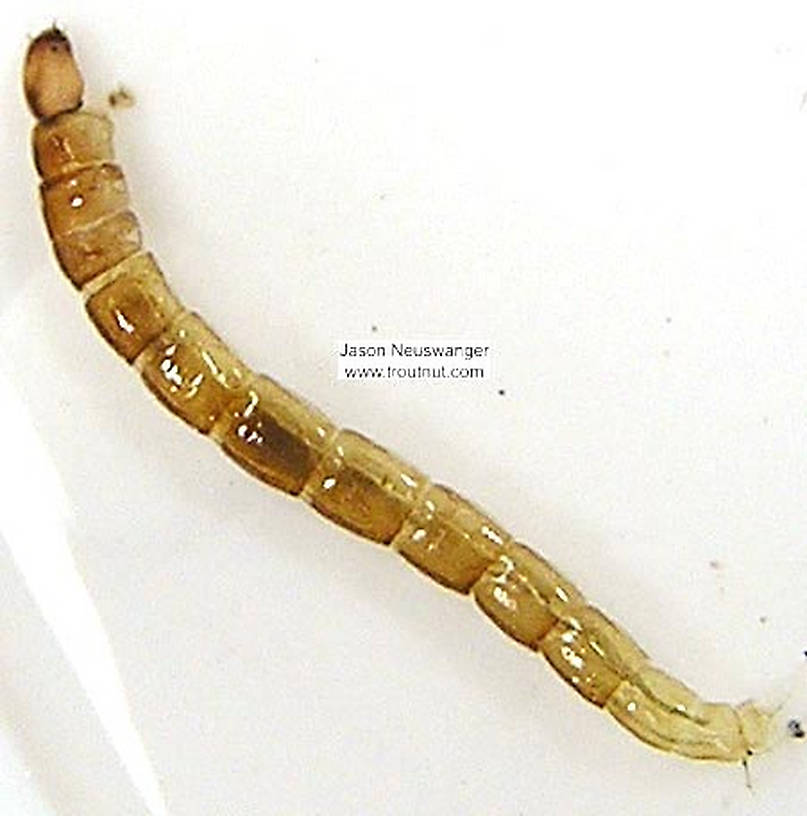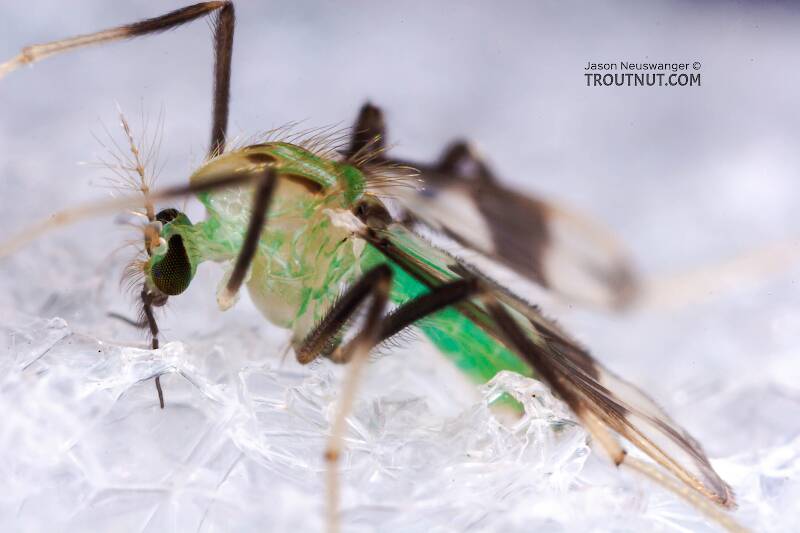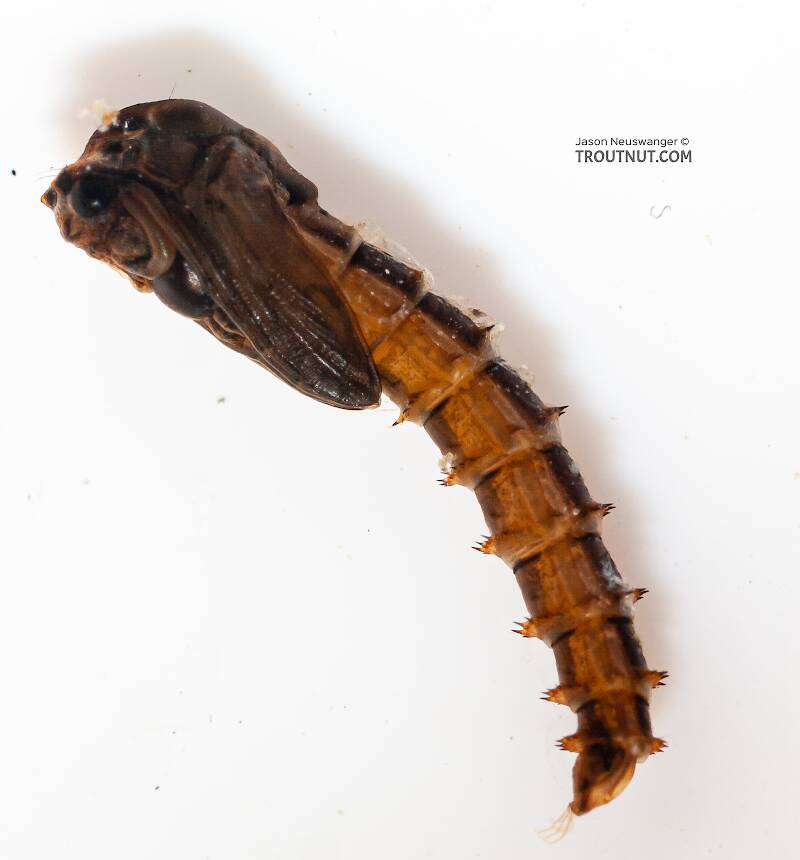
Salmonflies
Pteronarcys californica
The giant Salmonflies of the Western mountains are legendary for their proclivity to elicit consistent dry-fly action and ferocious strikes.
Featured on the forum

This is the first of it's family I've seen, collected from a tiny, fishless stream in the Cascades. The three species of this genus all live in the Northwest and are predators that primarily eat stonefly nymphs Merritt R.W., Cummins, K.W., and Berg, M.B. (2019).

Troutnut is a project started in 2003 by salmonid ecologist Jason "Troutnut" Neuswanger to help anglers and
fly tyers unabashedly embrace the entomological side of the sport. Learn more about Troutnut or
support the project for an enhanced experience here.
Midges
Midges are most popular with anglers who fish fertile, placid spring creeks and stillwaters. Their often tiny size frustrates anglers who encounter trout feeding selectively on their frequent hatches. Their many thousand species are impossible to sort out, but they all share similar stages and behavior as far as the angler is concerned.
This common name refers to only one family. Click its scientific name to learn more.
True Fly Family Chironomidae
These are pretty much always called Midges.
Midges are the most important aquatic insects in some places, especially fertile spring creeks where they are extremely abundant and the current is so slow that it's efficient for trout to surface feed on very tiny insects.
Some midges are large, up to hook size 14, but the majority are size 22 or smaller. The number of genera and species is hopelessly huge for angler entomologists to ever learn, and the identifing characteristics often require slide-mounting tiny parts under high-powered microscopes. Even the most Latin-minded fisherman must slip back to the basics--size and color--to describe his local midge hatches.
Some midges are large, up to hook size 14, but the majority are size 22 or smaller. The number of genera and species is hopelessly huge for angler entomologists to ever learn, and the identifing characteristics often require slide-mounting tiny parts under high-powered microscopes. Even the most Latin-minded fisherman must slip back to the basics--size and color--to describe his local midge hatches.

This large midge larva is about 3/4" long.
See 25 more specimens...
References
- Merritt R.W., Cummins, K.W., and Berg, M.B. 2019. An Introduction to the Aquatic Insects of North America (Fifth Edition). Kendall/Hunt Publishing Company.



